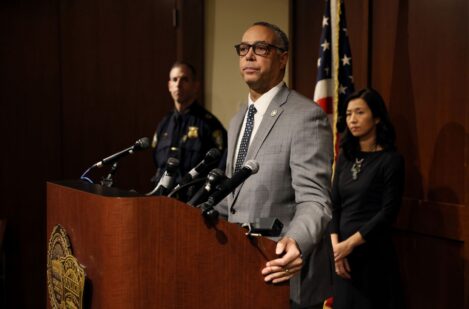New research supports a new approach to dealing with ‘emerging adults.’
By The Editorial Board, May 25, 2023, 4:00 a.m.

Facts are indeed stubborn things. And the facts produced in study after study support the notion that throwing youthful offenders — those 18 to 21 — into an adult prison system is counterproductive.
It vastly increases the likelihood they’ll end up back in prison, harms their “physical and mental health, impedes their educational and career success, and often exposes them to abuse,” according to a recent national study by The Sentencing Project.
“And the use of confinement is plagued by severe racial and ethnic disparities,” the study also noted — a data point that holds up for Massachusetts as well.
Meanwhile, evolving research on the late adolescent brain (defined as ages 18 to 21) has told us a great deal that many involved in the administration of justice (not to mention parents) know intuitively — that the age group is prone to risk taking, peer pressure, and “more sensation-seeking behavior” than those over 21.
The research cries out for us as a society to look at how those late adolescents are treated within the state’s criminal justice system and whether it’s time to do things differently — to keep most of those “emerging adults” out of adult prisons.
In 2013, the state raised the age for juvenile jurisdiction from 17 to 18, thus keeping 17-year-olds in the juvenile system. An attempt in 2018 to increase the age of “criminal majority” to 19 as part of a sweeping criminal justice reform act caused such a brouhaha that it was dropped and left to a task force for further study.
This year state Senate President Karen Spilka told the Globe editorial board raising the age limit was on her priority list.
“It’s a matter Massachusetts could lead the way on and really make a difference in young lives,” she said.
“Some of the sheriffs are doing great programming” for youthful offenders, she added, “but they still end up with [adult criminal] records. This is an important thing in terms of our justice system.”
In fact, as if to show the seriousness of her intentions, this year the Senate president swapped out the Senate Reimagining Massachusetts Committee for a new Juvenile and Emerging Adult Justice Committee under the leadership of state Senator Brendan Crighton of Lynn.
State Representative Jim O’Day is leading the effort on the House side with a bill that would keep 18-, 19-, and 20-year-olds in the juvenile system — raising the age gradually over the next five years. (That would not change the rules for those accused of murder, who can be tried as adults beginning at age 14.)
The Department of Youth Services currently can hold those sentenced as juveniles for certain serious crimes until age 21 and likely wouldn’t need much in the way of ramp-up time to accommodate a new cohort of youthful offenders, particularly if the age limit is raised gradually.
And by all accounts, DYS has done a good job of keeping those youthful offenders assigned to its care from coming back into the criminal justice system.
“Since raising the age in 2013 to include 17-year-olds, Massachusetts has seen a reduction in juvenile crime, a decrease in [the] number of cases arraigned and a decrease in new commitments to DYS (through 2022),” according to a report by Citizens for Juvenile Justice.
The results for those committed have also been impressive. The reconviction rate for those committed to DYS facilities was 26 percent, compared to 55 percent for late adolescents in the adult system. And yet the crimes for the two groups were remarkably similar, the study found — largely misdemeanors like simple assault, disorderly conduct, shoplifting, and alcohol-related offenses.
Sure, there are other ways of dealing with youthful offenders. Late last month Suffolk District Attorney Kevin Hayden announced a pilot pretrial diversion program to begin this summer for 18- to 25-year-olds out of Dorchester District Court.
“The goal is always to keep kids out of the system and give them the opportunity to succeed,” Hayden said in introducing the program.
A “pre-arraignment” program aimed at first-time offenders or those with “limited” criminal histories could result in a clean slate for those who successfully complete the program. A parallel presentencing diversion program would also include the possibility of ultimate dismissal of a case.
And the program could be expanded to other courts in the county, Hayden indicated.
But a systemic approach, like the “Raise the Age” bill, is the best way to help level the playing field statewide and help address the racial disparities endemic in the current system where Black and Latino young adults are 3.2 and 1.7 times as likely to be imprisoned as their white counterparts.
Raising the age for juvenile defendants is one of those bits of unfinished business from a trailblazing piece of legislation now five years into its implementation. Today, given the state of scientific research on developing brains, the case is even stronger to keep young adults out of a prison system ill-equipped to provide the education and the rehabilitation they need. Today it’s time to try something different, something better.
Read the full Boston Globe article here.





